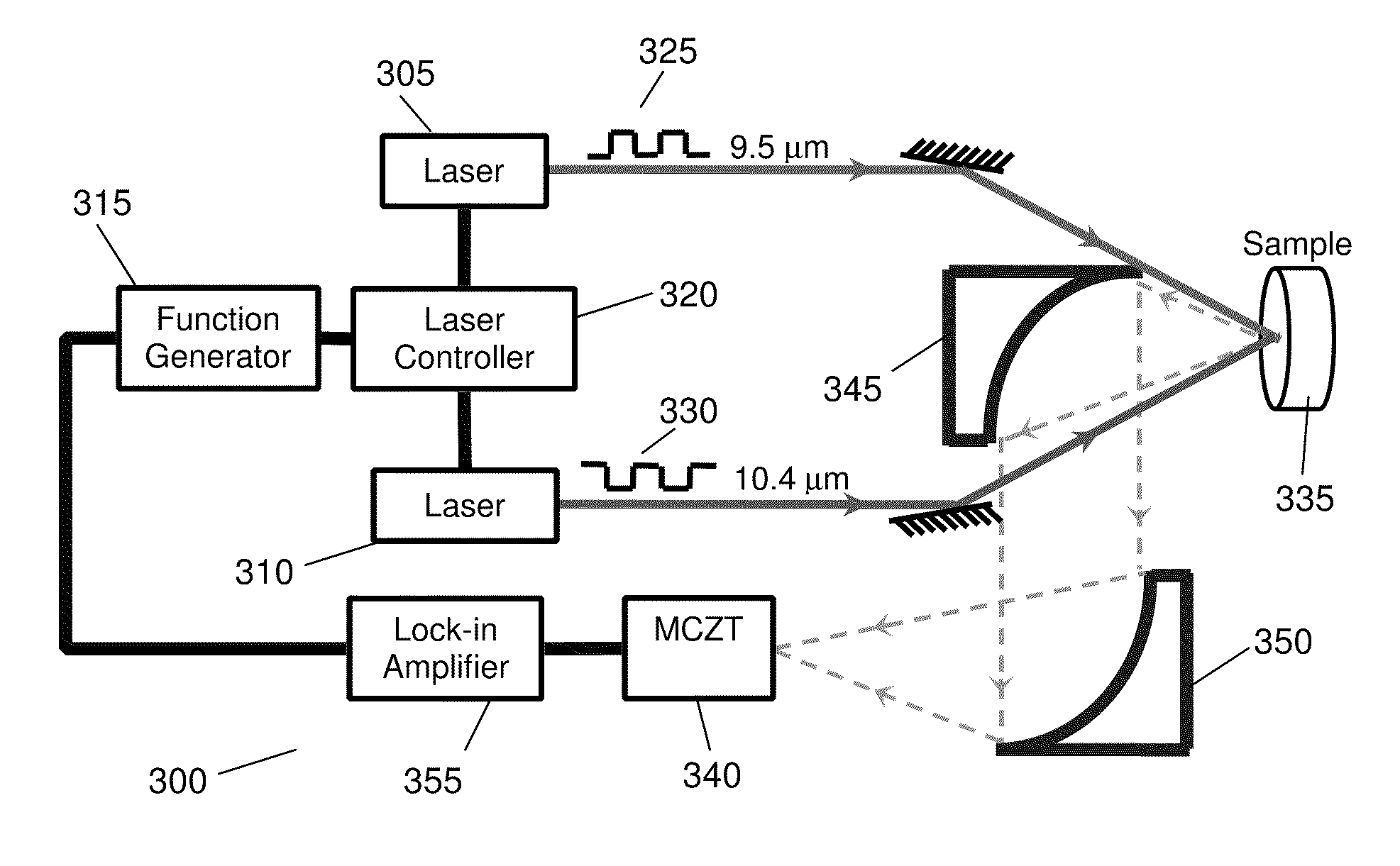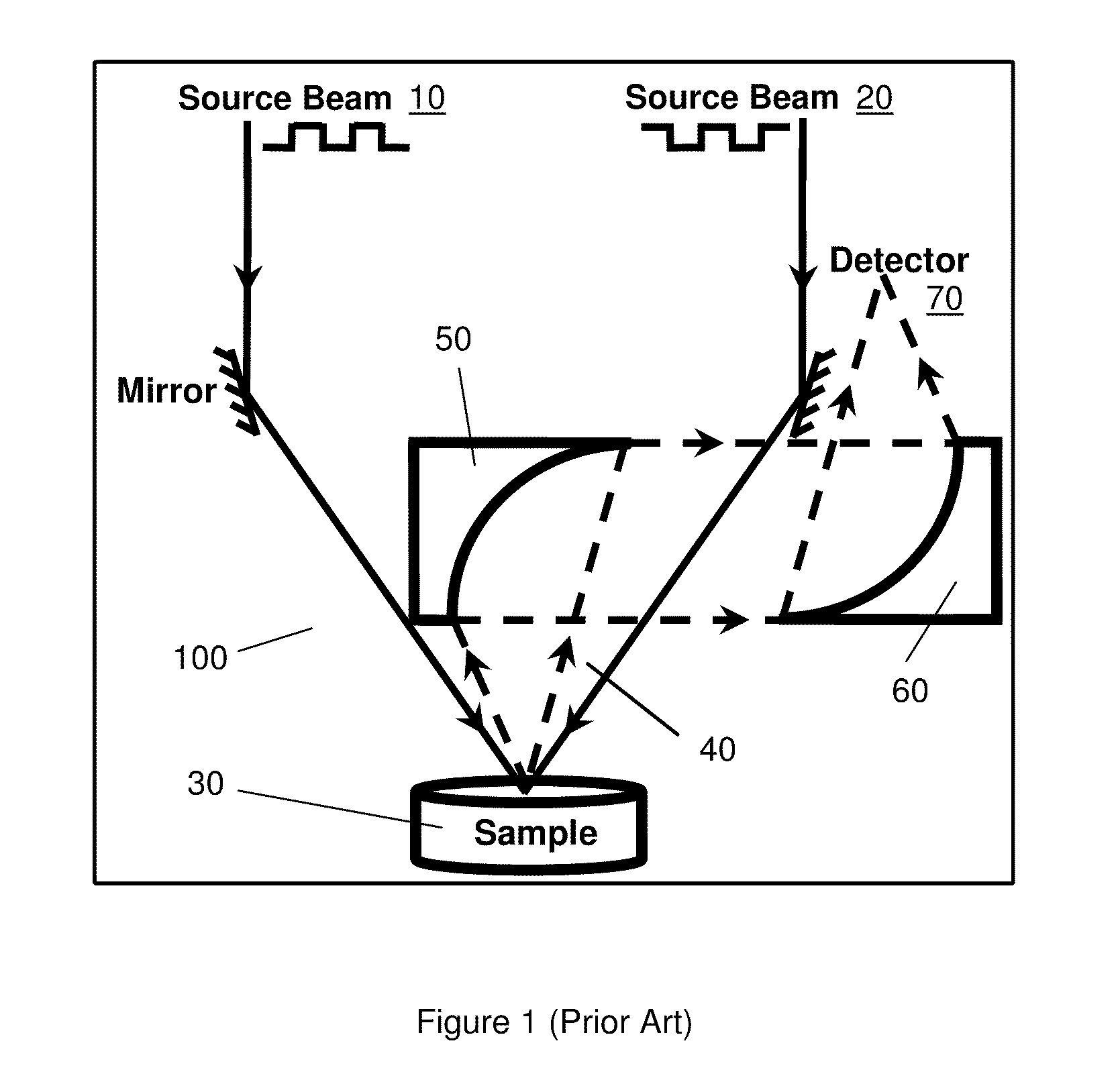Method of performing wavelength modulated differential laser photothermal radiometry with high sensitivity
- Summary
- Abstract
- Description
- Claims
- Application Information
AI Technical Summary
Benefits of technology
Problems solved by technology
Method used
Image
Examples
example
WM-DPTR Method for the Non-Invasive Detection of Glucose Using Intensity Control
[0112]The modified WM-DPTR method, when adapted specifically for the measurement of glucose, consists of the out-of-phase modulated excitation at two discrete wavelengths, preferably 9.5 μm and 10.4 μm and / or 8.5 μm (preferably near the peak and the baseline of the aforementioned glucose absorption band, respectively, FIG. 19). Two laser beams (˜45 mW each) at 9.5 μm and 10.4 μm were generated by two quantum cascade lasers (QCL) or alternatively, CO2 lasers as disclosed in US20070213607, resulting in a differential blackbody (Planck) emission and a thermal-wave up-conversion process detected via a broadband, thermally-sensitive detector such as a HgCdZnTe (MCZT) detector (preferably with a 2-6 μm spectral detection bandwidth).
[0113]The differential method suppresses the strong background signal due to water absorption while the detector spectral bandwidth, which rejects the incident beams, eliminates sou...
PUM
 Login to View More
Login to View More Abstract
Description
Claims
Application Information
 Login to View More
Login to View More - R&D
- Intellectual Property
- Life Sciences
- Materials
- Tech Scout
- Unparalleled Data Quality
- Higher Quality Content
- 60% Fewer Hallucinations
Browse by: Latest US Patents, China's latest patents, Technical Efficacy Thesaurus, Application Domain, Technology Topic, Popular Technical Reports.
© 2025 PatSnap. All rights reserved.Legal|Privacy policy|Modern Slavery Act Transparency Statement|Sitemap|About US| Contact US: help@patsnap.com



